Q
byd seal berapa hp
The BYD Seal hits the Malaysian market with two powertrain options. The rear-wheel drive single-motor variant pumps out a healthy 313 horsepower, while the all-wheel drive dual-motor performance flagship cranks things up to an impressive 523 horsepower, really showcasing what electric performance is all about. Built on BYD's e-Platform 3.0 and packing their Blade Battery technology, this car doesn't just deliver strong range – up to 520 km on the WLTP cycle – it also nails the crucial combo of safety and fast-charging capability, supporting DC fast charging at up to 150kW. For Malaysian buyers, the Seal's healthy horsepower figures don't translate to sky-high running costs. In fact, with local charging networks like ChargeSini and Gentari, you're looking at some pretty affordable motoring. And let's not forget that instant torque electric motors are known for – it means the Seal accelerates harder than a comparable gas-powered car. The AWD version? A blistering 3.8 seconds from 0-100km/h. Throw in the Malaysian government's current tax breaks on EVs – think import duty and road tax exemptions – and the BYD Seal becomes a seriously compelling value proposition. Tech-savvy locals will also appreciate the smart features, like the DiPilot driver assistance system and that 15.6-inch rotating infotainment screen.
Special Disclaimer: This content is published by users and does not represent the views or position of PCauto.
Related Q&A
Q
What is the most sold electric car in the world 2024?
As of 2024, the world's best-selling electric vehicle is the Tesla Model Y. This ride has won over consumers globally, thanks to its impressive range, cutting-edge autonomous driving tech, and that ever-expanding Supercharger network. It's been particularly killing it in North America, Europe, and Asia. For Malaysian buyers, the Model Y might just be a top contender too. Tesla's been steadily beefing up its presence in Southeast Asia, and that includes rolling out Superchargers in Malaysia. Sure, the local EV scene is still growing, but government support for new energy vehicles—think tax breaks and charging infrastructure pushes—is really helping to drive adoption.
But Tesla isn't the only player in town. Brands like BYD, Hyundai, and Nissan also hold significant chunks of the global EV market. Take the BYD Atto 3 (that's the Yuan PLUS) and Hyundai Ioniq 5, for example—they're gaining traction with their solid value for money and fresh, innovative designs.
For Malaysian consumers eyeing an EV, it pays to weigh factors like range, how easy it is to charge up, after-sales service, and local market support. With tech advancing and policies backing things up, the Malaysian EV market is only going to get more diverse in the years ahead.
Q
What is BYD ranked in the world in 2024?
BYD has solidified its position among the world's top automakers in 2024, with standout performance in the new energy vehicle sector. Industry data shows their sales have cracked the global top three, cementing their status as one of the most influential EV brands around. The secret to BYD's success? Their robust vertical integration – they develop everything in-house, from batteries and motors to electronic control systems. On top of that, they're aggressively expanding overseas, with Southeast Asia (Malaysia included) being a key strategic focus.
For Malaysian buyers, models like the Atto 3 are steadily gaining traction thanks to their strong value proposition and impressive range. Local assembly plans are only set to boost their competitiveness further. A big selling point? BYD's Blade Battery technology, which leads the industry in safety and energy density – a crucial advantage in Malaysia's hot climate.
As the global shift to electrification accelerates, BYD looks primed to grow its market share and roll out more innovative products. If you're a Malaysian considering an EV, make sure to weigh factors like charging infrastructure, warranty policies, and local after-sales support before making your decision.
Q
What is the best-selling EV in China 2024?
The best-selling electric vehicle in China's market for 2024 is the BYD Song PLUS EV. This model has won widespread favor among consumers thanks to its impressive range, spacious interior, and BYD's accumulated technological expertise in the EV sector. As a leader in China's EV market, BYD boasts a product lineup spanning from entry-level to high-end models, catering to the diverse needs of different consumers. The success of the Song PLUS EV also reflects Chinese consumers' preference for family-friendly electric SUVs.
For Malaysian consumers, while BYD might not enjoy the same level of brand recognition as Japanese or German marques in the local market, the technological prowess and cost-effectiveness advantages of Chinese brands like BYD are becoming increasingly evident as EVs gain global traction. It's plausible that they could carve out a significant presence in Malaysia in the years to come.
The development of electric vehicles doesn't solely rely on the performance of the cars themselves; the improvement of charging infrastructure is also a crucial factor driving their widespread adoption. The Malaysian government has been actively pushing for the implementation of EV-related policies in recent years, including the construction of charging stations and vehicle purchase subsidies. These initiatives will create favorable conditions for the promotion of electric vehicles in Malaysia.
Q
How many cars has BYD sold in China in 2024?
I haven't been able to track down specific, standalone figures for BYD's sales exclusively in China for 2024 just yet. However, what we do know is that BYD's global sales hit a whopping 4.27 million units last year, with overseas markets contributing 417,204 units. Doing a little back-of-the-envelope math, that roughly puts their China sales at around 3.8528 million units (4.27 million -41.7204 million=3.852796 million).
2024 was an absolutely stellar year for BYD. They didn't just dominate the sales charts in China; they also clinched the title of the world's top-selling new energy vehicle manufacturer. A big part of their success comes down to their multi-brand strategy – think "BYD," "Fang Cheng Bao," "Denza," and "Yangwang" – each catering to different market segments and needs. On top of that, continuous technological innovation, like their "e-platform 3.0 Evo" and "5th Generation DM Technology," has been a major driver propelling those sales numbers ever higher.
Q
How much is the BYD Seal in 2024?
The 2024 BYD Seal comes in multiple variants with different price tags. Specifically, the BYD Seal Dynamic EV is priced at RM 163,800, the BYD Seal Premium (Extended Range) goes for RM 179,800, and the top-of-the-line BYD Seal Performance AWD hits RM 199,800. All these are pure electric D-segment sedans, boasting solid range and equipment levels. Let's talk dimensions: they stretch 4,800mm in length, 1,875mm in width, 1,460mm in height, with a 2,920mm wheelbase. There's seating for five, and a 400-liter trunk to boot. Performance-wise, the variants differ quite a bit. The Seal Performance AWD, for example, rockets from 0-100km/h in a claimed 3.8 seconds, while the Seal Dynamic EV does the same sprint in a stated 7.5 seconds. So, buyers can pick the one that best fits their needs.
Q
What Segment Does BYD Seal Belong to?
The BYD Seal belongs to the D-segment cars. D-segment cars are typically mid to large-sized vehicles, well-known for striking a balance between space, comfort, and performance.
The BYD Seal has a body length of 4,800 millimeters, a width of 1,875 millimeters, and a wheelbase of 2,920 millimeters, offering passengers a relatively spacious interior. The trunk space is also quite decent. Such specification makes it suitable for comfortable long - distance trips and can meet the sufficient space requirements for daily use. Moreover, in terms of performance, the Seal provides different versions with various power outputs. It can provide a smooth daily driving experience and also offer a more exciting high - performance driving feel. Whether for family users or individual users who desire more space and better performance in their vehicles, the D - segment BYD Seal is an appealing choice.
Q
What's the Reslae Value of BYD Seal?
The BYD Seal, a relatively new electric vehicle in the Malaysian market, currently lacks complete data on its resale value, but general resale value for EVs can provide some references. Due to rapid advancements in EV technology, the resale value of electric vehicles typically declines slightly faster than that of comparable internal combustion engine (ICE) vehicles in the first three years—around 50%-60% for EVs versus 60%-70% for ICE cars.
Key factors influencing resale value include battery health (BYD offers an 8-year/160,000 km battery warranty), growing brand recognition (BYD has shown strong performance in recent years), and the maturity of EV infrastructure (such as charging network development). Compared to similar ICE vehicles, the BYD Seal's extended battery warranty and lower operating costs (electricity being significantly cheaper than fuel) may help mitigate depreciation.
For prospective buyers, it is advisable to consider certified pre-owned programs and maintain complete service records to preserve resale value. As EV adoption increases, more definitive resale value data will be provided.
Q
What's the Displacement of BYD Seal?
The BYD Seal is an electric vehicle, so it doesn't use the traditional "CC" (cubic centimeters, used to measure internal combustion engine displacement) as a metric. It provides different versions, such as the Dynamic EV, Premium (Extended Range), and Performance AWD. In terms of the powertrain, the Dynamic EV version has a total motor power of 150kW, a maximum horsepower of 204PS, and a total torque of 310N·m. The Premium (Extended Range) version has a total motor power of 230kW, a maximum horsepower of 308PS, and a torque of 360N·m. The Performance AWD version is more powerful, with a combined system power of 390kW, a combined horsepower of 523PS, and a combined torque of 670N·m. These motors can provide efficient and strong power output, meeting different consumers' needs for speed, range, etc. Moreover, the all - electric drive also complies with the current trend of environmental protection and energy conservation.
Q
What's the PCD Size of BYD Seal?
The PCD (Pitch Circle Diameter) of the BYD Seal is 5×114.3, which means the wheel hub has 5 bolt holes evenly distributed on a circle with a diameter of 114.3 millimeters, matching the standard used by many mainstream Japanese vehicles (such as Honda and Toyota). So, it's easy to find compatible wheel hub options for modification or replacement in the Malaysian market.
Beyond PCD, wheel modifications also require attention to other parameters, including the hub bore (recommended to use OEM-concentric hub rings for precise fitting), offset (ET value), and wheel width to avoid affecting suspension geometry or causing friction. For wheel upgrades, it is advisable to choose EV-rated products that can accommodate the Seal's battery weight and prioritize purchasing through BYD-certified channels to ensure safety and compatibility.
Q
Does BYD Seal Support Apple Carplay?
The BYD Seal doesn't have the Apple CarPlay feature. Apple CarPlay is a system developed by Apple Inc., which allows iPhone users to connect their devices to the in-vehicle infotainment system. Although some car models in the market support this feature, the BYD Seal isn't one of them.
However, the BYD Seal has its own advanced infotainment system. It's equipped with a 15.6 - inch intelligent rotating touchscreen, which can provide a wide range of entertainment and vehicle control functions. This car also adopts a comprehensive set of standard configurations, such as various safety systems, comfortable seats with multiple adjustment options, and a high - quality sound system with 12 Dynaudio speakers. Even though the Seal doesn't have Apple CarPlay, its own infotainment capabilities can still bring users a convenient and pleasant driving experience.
Popular Cars
Model Year
Car Compare
Car Photo
Latest Q&A
Q
Does more RPM mean more torque?
The relationship between engine speed (RPM) and torque is not a simple linear proportionality, but rather an inverse relationship under the premise of constant power. At low engine speeds, due to the extended fuel injection and intake duration, the combustion pressure inside the cylinders increases, resulting in higher torque output, which is suitable for scenarios requiring strong traction such as vehicle launch, hill climbing, or heavy loads. Conversely, torque decreases at high speeds, but power may increase to support high-speed driving. This characteristic stems from the physical formula "Power = Torque × Speed × Constant." Therefore, different vehicle models are calibrated for torque curves based on their intended purposes. For example, diesel engines or turbocharged engines typically emphasize high torque at low speeds, while high-performance vehicles prioritize power output at high speeds. In daily driving, rationally utilizing transmission gear ratios to match speed and torque (such as using first gear for high-torque hill climbing and higher gears for low-RPM cruising) can optimize fuel economy and dynamic performance.
Q
What is the maximum torque a human can apply?
The maximum torque that a human can apply with one hand typically ranges from 60 to 120 Newton-meters, with the specific value depending on individual strength, force application posture, and tool usage. When an average adult uses a standard wrench, a grip force of 200 Newtons can generate approximately 100 Newton-meters of torque when calculated with a 0.5-meter lever arm. However, due to muscle efficiency limitations, the actual output is mostly 50%-70% of the theoretical value. Professional athletes or manual laborers can achieve 25-30 Newton-meters through training, while specially trained individuals such as rock climbing enthusiasts can generate finger torque of up to 40 Newton-meters. Tools can significantly amplify torque output; for example, a regular wrench can multiply human force by 3-5 times, but sustained force application requires consideration of muscle fatigue. Daily operations like tightening screws or turning a steering wheel typically maintain torque within the range of 5-50 Newton-meters. Torque calculation follows the physical principle of force multiplied by lever arm, and in practical operations, attention should be paid to the influence of force application angle and joint range of motion on the final torque value.
Q
What is low RPM high torque?
Low RPM high torque refers to the characteristic of an engine that can deliver substantial torque within a relatively low RPM range (typically 1500-3000 rpm). This design significantly enhances a vehicle's launch acceleration and hill-climbing capability. When engine power remains constant, torque is inversely proportional to RPM. Consequently, generating high torque at low RPM enables the crankshaft to produce greater power per revolution, providing ample traction without requiring high engine speeds—particularly advantageous for urban stop-and-go driving or mountainous terrain. Turbocharged models often excel in this regard; for instance, certain popular local SUVs achieve peak torque at 1800 rpm, facilitating loaded hill ascents or overtaking maneuvers. By contrast, low-torque engines must rely on higher RPMs to compensate for power deficiency, resulting in increased fuel consumption and acceleration lag. Notably, the low-RPM high-torque characteristic also reduces shift frequency, minimizes mechanical wear, and improves driving smoothness—especially beneficial for drivers frequently encountering congested conditions. When evaluating this parameter during vehicle selection, prioritize models whose torque curve peaks earlier, typically indicated in specifications as "XX N·m @ 1500-4000 rpm."
Q
How much torque is 1800 RPM?
The torque value at 1800 RPM needs to be calculated in combination with engine power, and the specific numerical value depends on the power output at this rotational speed. According to the physical formula "Power = Torque × Rotational Speed ÷ 9550", when power is constant, torque is inversely proportional to rotational speed. This means that when the engine speed is 1800 RPM, if the vehicle is in a low-speed, high-load working condition (such as climbing a slope or starting with a heavy load), the torque output will be relatively high to provide sufficient traction; while during flat-road cruising, the torque at the same rotational speed may decrease moderately to optimize fuel efficiency. Turbocharged engines usually form a wide torque plateau in the range of 1500-4500 RPM, and 1800 RPM falls precisely within this range, delivering over 90% of the peak torque. For example, a 1.5T engine can generate approximately 250-300 Nm of torque at this rotational speed. In actual driving, by monitoring the tachometer and coordinating throttle control, the torque characteristics at this rotational speed can be effectively utilized to achieve smooth acceleration or overcome gradients. It should be noted that different engine calibrations will result in variations in torque curves, so it is recommended to consult the torque-speed curve diagram of the specific vehicle model to obtain accurate data.
Q
Why is it almost impossible to rev to 21000 RPM?
It is nearly impossible to increase the engine speed to 21,000 revolutions per minute, primarily constrained by the comprehensive limitations of material physical limits, mechanical structural strength, and engineering design. The inertial forces exerted on moving components within the engine, such as pistons and connecting rods, at ultra-high speeds would far exceed the tensile strength of metallic materials, resulting in component deformation or even fracture. Taking current mass-produced naturally aspirated engines as an example, the Lexus LFA's 9,000 revolutions per minute already approaches the acoustic and mechanical balance limits of naturally aspirated engines, while turbocharged engines like the Bugatti Veyron, which prioritize low-end torque output, typically limit the redline speed to approximately 6,400 revolutions per minute. Furthermore, emission regulations and noise standards further diminish the viability of ultra-high-speed engines, with modern technology favoring efficiency improvements through turbocharging or hybrid systems. Even for diesel engines, their compression ignition characteristics generally result in lower maximum speeds compared to gasoline engines, typically not exceeding 5,000 revolutions per minute. These technical challenges and safety considerations collectively determine that achieving 21,000 revolutions per minute remains within the theoretical realm under current engineering frameworks.
View MoreRelated News

2025 BYD Seal Coming to Malaysia with DiSus-C Adaptive Suspension
JohnAug 13, 2025
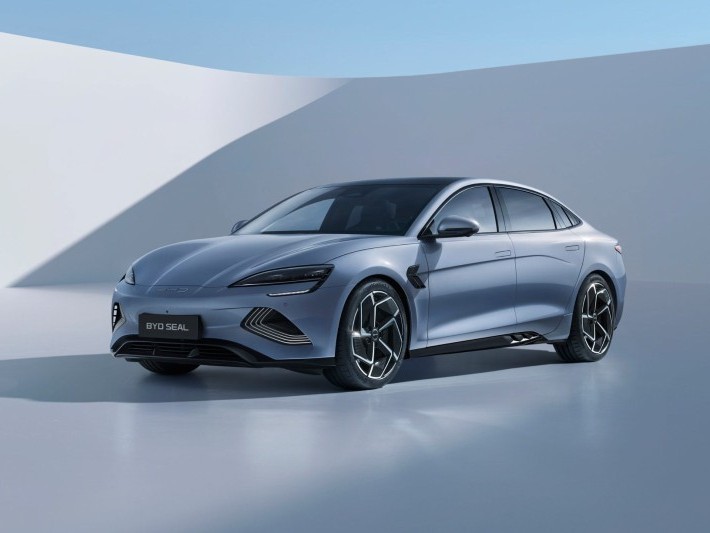
BYD Seal interior design revealed: A fusion of modern technology and luxury
RobertJul 15, 2025
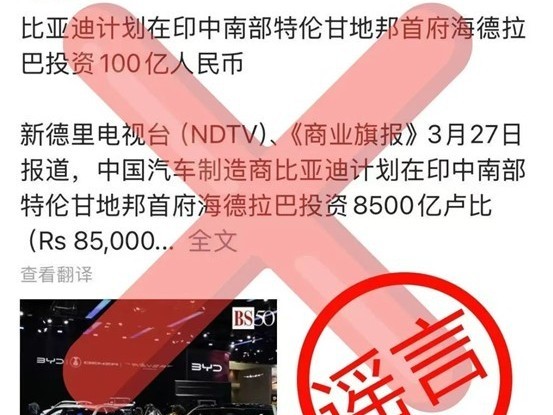
BYD Denies Rumors of ¥10 Billion Investment in Factory in India
JamesApr 1, 2025
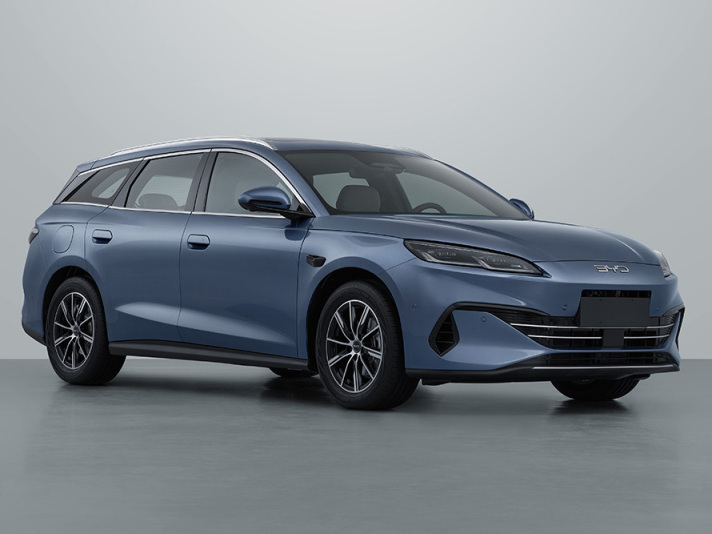
Photos of the BYD Seal 06 Touring Edition Reveal the Brand's Entry into a New Niche Market
JamesMar 24, 2025
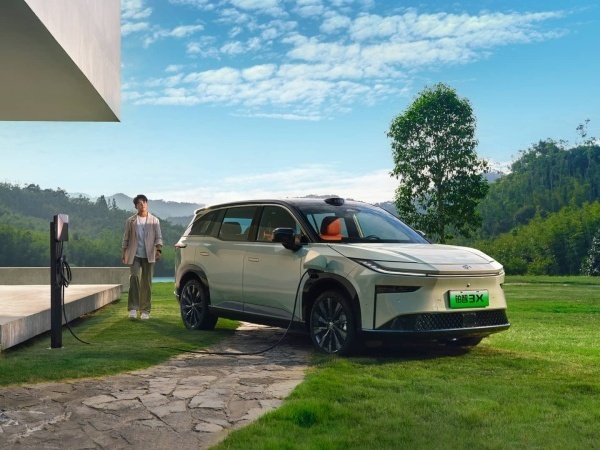
Toyota has released a surprising all-electric SUV in China, priced lower than BYD
LienMar 7, 2025
View More


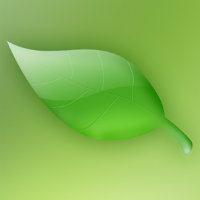
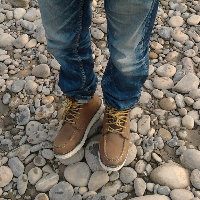








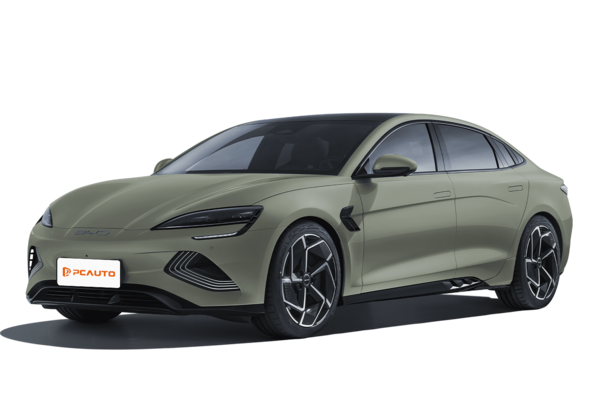




Pros
Cons